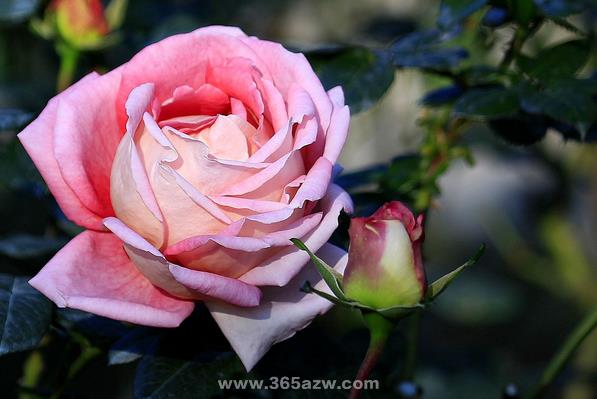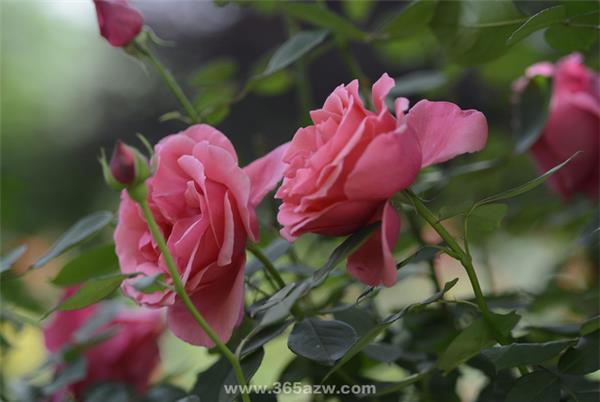Detailed explanation of rose cultivation techniques
Rose is a very common plant, beautiful and generous. Next, I would like to introduce to you the cultivation techniques of rose.

Rose classification
Fujimoto rose
Rattan rose, a rookie of the subfamily Rosaceae, is a rattan shrub with tall plants. Every year, sturdy new branches are drawn from the base, and sturdy lateral branches grow at the apex of biennial rattan branches. It belongs to the habit of flowering in four seasons, but only in late spring or early summer, the number of flowers is the most, climbing growth type, developed root system, strong resistance, rapid germination and strong growth of branches. There are 7-8 main branches per year, and each main branch shows open branches, with a maximum annual growth of 5 meters, with strong disease resistance.
Big flower perfume rose
There are many varieties, which is the main part of modern rose. It is characterized by strong plants, single or group flowers, large flowers, elegant and beautiful flowers, numerous, bright and bright flowers, fragrant smell and strong ornamental.
Miniature rose
The new variety of rose family, its plant type is short, spherical, many flower heads, because of its unique character, also known as "diamond rose". It is mainly used for potted ornamental plants, decorating lawns and arranging patterns.

Cultivation techniques of Chinese rose
Management: rose transplantation is carried out between November and March of the following year, and pruning can be carried out at the same time, first cutting off dense branches and withered branches, and then cutting off old and weak branches, leaving 2 Mel 3 outward growing buds in order to spread out in all directions. Properly cut the especially strong branches to strengthen the growth of the weak branches. when the new branches grow too dense in summer, they should be thinned. After each batch of flowers, the upper part of the branches connected to the residual flowers should be cut off in time, so as not to make the seeds consume nutrients, and to retain the full branches in the middle and lower parts. promote early new branches to bloom again.
The main pests of rose are aphids, leaf roll moth, diamondback moth, etc., and the control is mainly controlled by pesticides such as 1000 ml / 1200 dimethoate or isocarbophos.
Propagation is mainly assisted by grafting, cuttage, sowing and tissue culture. Commonly used grafting rootstocks are: wild rose, pink rose, "white jade tang" (rose) and so on.

Introduction to the propagation methods of Chinese rose
Cuttage propagation
In order to breed the rose, we must first prepare the hotbed, which is filled with brewed heat, such as horse dung or leaves, and will produce a certain amount of heat when watered and compacted. Cut the backward semi-lignified branches of flowers from the mother plant of the rose, the length is about 10 meters, and the branches generally have three bud eyes. all the leaves in the lower part of the cuttings should be cut off, leaving only the top two leaves for photosynthesis. leaves can not be left too much, consuming nutrients in the stem and evaporating a large amount of water, the base of the cuttings is cut into a "horseshoe" oblique shape, put in a clear water basin to prevent air drying, and should be cut in time.
Grafting propagation
Grafting is the main means of breeding rose, when grafting, the selection of rootstocks is very important. The source of cuttings is sufficient, it is easy to take root, can adapt to the local climatic conditions, and has a good affinity with the scion. At present, the commonly used rootstock in China is Rosa. Branch grafting is often used in dormant period, before leaf buds sprout in spring. Bud grafting is often used in growing period.

The above is the introduction to the cultivation of Chinese rose. I hope you like it.
Related
- Wuhan Hospital Iron Tree Blooming Result Was Instantly Frightened by the Gardener Master
- Which variety of camellia is the most fragrant and best? Which one do you like best?
- What is the small blue coat, the breeding methods and matters needing attention of the succulent plant
- Dormancy time and maintenance management of succulent plants during dormancy
- Minas succulent how to raise, Minas succulent plant pictures
- What are the varieties of winter succulent plants
- How to raise succulent plants in twelve rolls? let's take a look at some experience of breeding twelve rolls.
- Attention should be paid to water control for succulent plants during dormant period (winter and summer)
- Watering experience of twelve rolls of succulent plants
- Techniques for fertilizing succulent plants. An article will let you know how to fertilize succulent plants.



